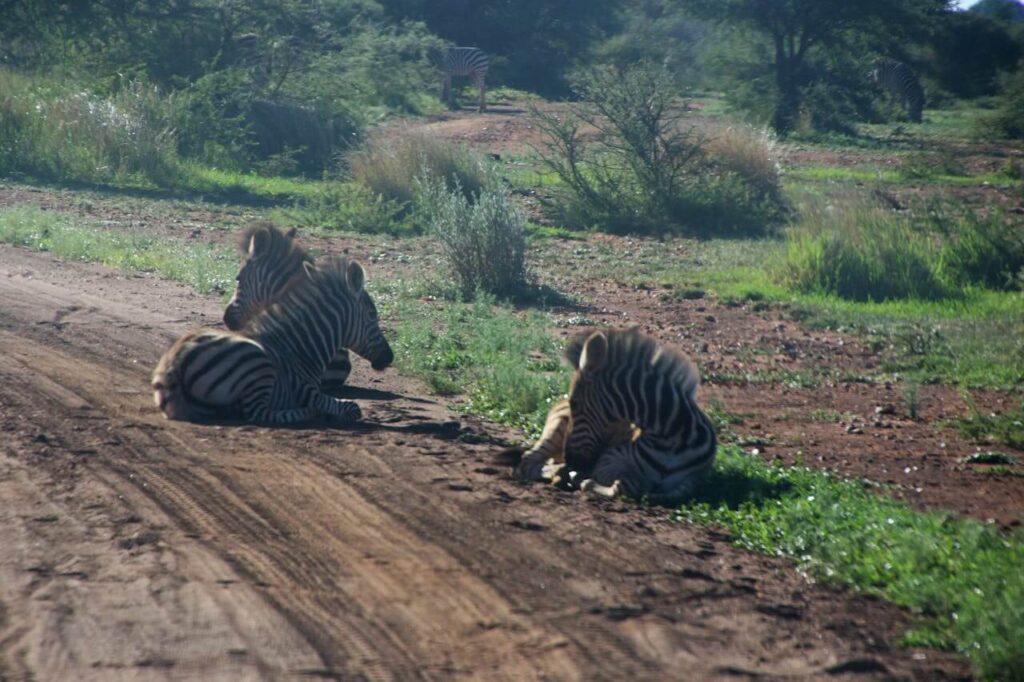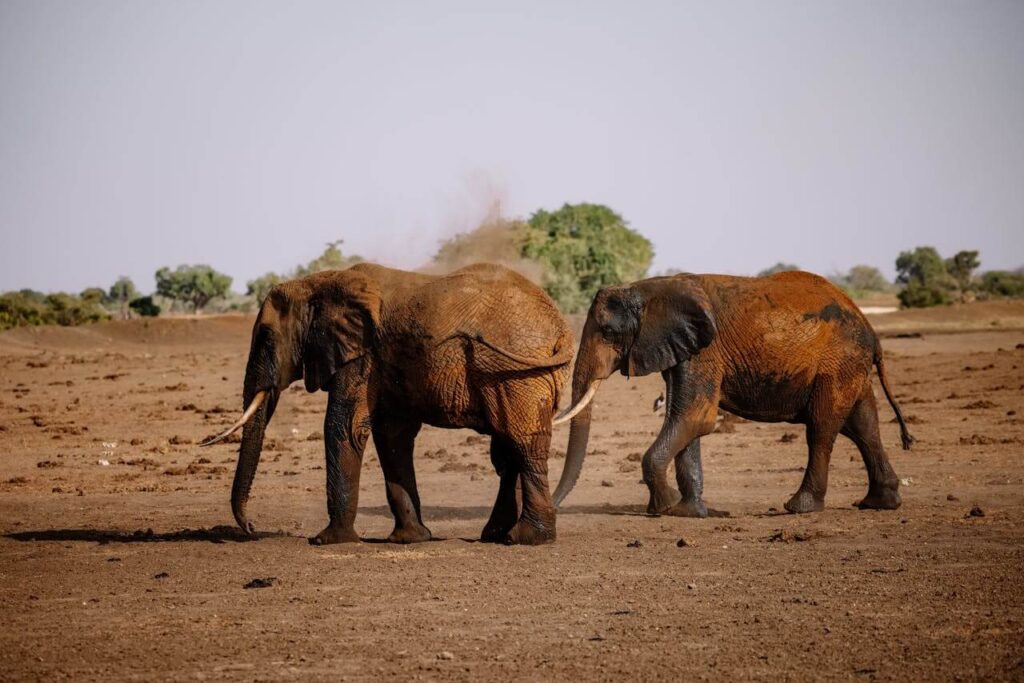Eco and wildlife tourism is a way of travelling that focuses on exploring nature while protecting the environment. It includes jungle safaris, birdwatching, trekking, and visiting nature reserves. The goal is to enjoy wildlife and natural beauty without harming them. Unlike regular tourism, eco-tourism promotes conservation and supports local communities.
In recent years, eco and wildlife tourism has become very popular in India. With its vast forests, mountains, rivers, and unique wildlife, India offers incredible experiences for nature lovers. People are now looking for more meaningful travel experiences, where they can connect with nature and contribute to its protection. Additionally, the rise in awareness about climate change and conservation has encouraged tourists to choose eco-friendly travel options.
Sustainable travel plays a crucial role in preserving India’s biodiversity. India is home to endangered species like tigers, rhinos, elephants, and snow leopards. Responsible tourism helps fund wildlife protection, prevents poaching, and supports local communities who depend on nature for their livelihood.
However, it is important to balance tourism with conservation. Too many visitors can harm fragile ecosystems. To ensure a positive impact, eco-tourism must be well-planned, promoting ethical wildlife experiences and encouraging travellers to respect nature. Responsible tourism is the key to protecting India’s rich biodiversity for future generations.
2. Understanding Eco and Wildlife Tourism
Eco-tourism vs. Wildlife Tourism: What’s the Difference?
Eco-tourism and wildlife tourism may seem similar, but they have different goals. Eco-tourism is about exploring nature in a way that protects the environment and benefits local communities. It focuses on sustainability, ensuring that tourism does not harm the ecosystem. Activities like nature walks, staying in eco-friendly lodges, and learning about conservation are key points of eco-tourism.
On the other hand, wildlife tourism is mainly about observing animals in their natural habitats. This includes activities like jungle safaris, birdwatching, and visiting national parks. While wildlife tourism can be part of eco-tourism, it does not always focus on sustainability. If not managed well, it can disturb animals and their habitats.
Key Principles of Eco-Tourism
Eco-tourism is based on three main principles:
- Sustainability – Travel should not harm nature; instead, it should help conserve it.
- Conservation – A portion of eco-tourism earnings should go toward protecting wildlife and natural spaces.
- Local Community Involvement – Tourism should benefit local people by creating jobs, promoting traditional cultures, and supporting local businesses.
How Wildlife Tourism Helps Conservation
When done responsibly, wildlife tourism plays a big role in conservation. Entrance fees from national parks help fund anti-poaching efforts and habitat protection. It also creates jobs for local people, reducing their dependence on harmful activities like deforestation or hunting. By visiting ethical wildlife tourism sites, travellers contribute directly to protecting India’s rich biodiversity.
3. The Evolution of Eco and Wildlife Tourism in India

Traditional Tourism vs. Modern Sustainable Tourism
In the last decade, tourism in India was mostly about sightseeing, religious travel, and leisure trips. People visit famous landmarks, stay in hotels, and often care about environmental impact. Wildlife tourism was limited to hunting expeditions during colonial times, which led to a decline in many animal populations.
Over time, with growing awareness about conservation, tourism has changed. Modern sustainable tourism focuses on protecting nature while allowing people to enjoy it responsibly. Instead of harming the environment, eco-tourism encourages visitors to respect and support it. Now, more travellers prefer jungle safaris, eco-lodges, and guided nature tours that promote conservation.
Key Policy Shifts Promoting Eco-Tourism
To protect India’s rich biodiversity, the government introduced policies:
- Project Tiger (1973): This policy is aimed at saving the Bengal tiger from extinction, this project led to the creation of tiger reserves across India.
- Wildlife Protection Act (1972): Established protected areas like national parks and wildlife sanctuaries to safeguard animals and forests.
- National Biodiversity Action Plan (2008): Encouraged eco-tourism to conserve wildlife while benefiting local communities.
Government Initiatives for Eco-Tourism
Both state and central governments have launched eco-tourism projects. States like Kerala, Sikkim, and Madhya Pradesh have promoted responsible tourism by developing eco-friendly lodges, trekking routes, and community-run tourism programs. National parks now follow strict rules to ensure minimal human impact while offering incredible wildlife experiences.
India’s shift toward eco-tourism is helping protect its natural heritage while giving travellers unforgettable experiences in the wild.
4. India’s Diverse Eco and Wildlife Hotspots
India is home to some of the world’s most breathtaking natural landscapes and diverse wildlife. From dense rainforests to vast national parks and eco-friendly villages, the country offers incredible destinations for eco and wildlife tourism.
Rainforests & Biodiversity Hotspots
India has some of the richest biodiversity in the world, especially in its rainforests and remote regions.
- Western Ghats – This UNESCO World Heritage site is one of the world’s top biodiversity hotspots.
- Kudremukh National Park (Karnataka): Famous for its lush green hills, rare orchids, and diverse wildlife, including leopards and Malabar civets.
- Periyar Wildlife Sanctuary (Kerala): Home to elephants, tigers, and the beautiful Periyar Lake, where visitors can enjoy boat safaris.
- Northeast India – A paradise for nature lovers with unique wildlife and rich tribal cultures.
- Kaziranga National Park (Assam): A UNESCO site known for the world’s largest population of one-horned rhinos.
- Manas National Park (Assam): A lesser-known gem offering a mix of forests, grasslands, and rare animals like golden langurs and clouded leopards.
- Andaman & Nicobar Islands – An untouched paradise for marine life.
- Mahatma Gandhi Marine National Park: Known for its coral reefs, sea turtles, and snorkelling adventures in crystal-clear waters.
National Parks & Wildlife Reserves
India has over 100 national parks, protecting rare animals and offering thrilling wildlife experiences.
- Jim Corbett National Park (Uttarakhand): India’s first national park, famous for Bengal tigers, leopards, and beautiful landscapes.
- Ranthambore National Park (Rajasthan): One of the best places to see wild tigers, known for its historic fort and dramatic rocky terrain.
- Sundarbans (West Bengal): The world’s largest mangrove forest, home to the Royal Bengal Tiger and unique creatures like estuarine crocodiles.
Eco-Tourism Villages & Sustainable Destinations
These villages show how communities can live in harmony with nature while promoting responsible tourism.
- Mawlynnong (Meghalaya): Known as “Asia’s Cleanest Village,” this charming place has eco-friendly homestays, root bridges, and lush greenery.
- Thenmala (Kerala): India’s first planned eco-tourism destination, offering nature trails, butterfly parks, and adventure activities.
- Khonoma (Nagaland): India’s first green village, where locals have banned hunting and deforestation, making it a model for sustainable tourism.
From rainforests to reserves, these destinations showcase India’s stunning biodiversity and the importance of eco-friendly travel.
5. Key Attractions & Activities in Eco and Wildlife Tourism

Eco and wildlife tourism is all about exploring nature responsibly while enjoying thrilling adventures. From spotting tigers in dense forests to trekking in the Himalayas and meeting indigenous communities, India offers many unique experiences for nature lovers.
1. Jungle Safaris & Wildlife Spotting
One of the biggest attractions in eco-tourism is going on a jungle safari to see wild animals in their natural habitat.
Top Safari Destinations & Best Time to Visit:
- Jim Corbett National Park (Uttarakhand) – India’s oldest national park, best visited between November and June to spot tigers and elephants.
- Ranthambore National Park (Rajasthan) – Best for tiger sightings, ideal between October and April.
- Kanha & Bandhavgarh National Parks (Madhya Pradesh) – Home to large tiger populations, best visited between October and June.
- Sundarbans (West Bengal) – A boat safari through mangrove forests, best between September and March.
2. Birdwatching Destinations
India is a paradise for bird lovers, with over 1,300 bird species found across the country.
- Bharatpur Bird Sanctuary (Rajasthan) – Also called Keoladeo National Park, it is home to rare migratory birds like Siberian cranes. Best time: October to March.
- Chilika Lake (Odisha) – Asia’s largest coastal lagoon, famous for flamingos, pelicans, and dolphins. The best time is November to February.
- Pangong Lake (Ladakh) – A high-altitude lake where visitors can see rare birds like the black-necked crane. Best time: May to September.
3. Nature Trekking & Hiking
For adventure lovers, eco-tourism offers some of the most breathtaking treks in India.
- Valley of Flowers (Uttarakhand) – A UNESCO World Heritage site famous for its colourful alpine flowers and rare species like the blue poppy. The best time is July to September.
- Great Himalayan National Park (Himachal Pradesh) – A trekker’s dream, with deep forests, glaciers, and rare wildlife like snow leopards. The best time is May to November.
- Dzükou Valley (Nagaland-Manipur Border) – Known for its rolling green hills and exotic flowers. The best time is June to September.
4. Marine and River Tourism
India’s eco-tourism is not just about forests, the oceans and rivers also offer breathtaking experiences.
- Scuba Diving in Lakshadweep & Andaman Islands – Crystal-clear waters, coral reefs, and marine life like sea turtles and manta rays make these islands perfect for diving. The best time is October to April.
- Dolphin Spotting in Odisha (Satapada, Chilika Lake) – A chance to see the rare Irrawaddy dolphins in their natural habitat. The best time is November to February.
- Ganges River Rafting (Rishikesh, Uttarakhand) – Thrilling rapids with breathtaking Himalayan scenery. Best time: September to June.
5. Community-Based Eco-Tourism
Eco-tourism is also about learning from Indigenous communities that have lived in harmony with nature for centuries.
- Northeast India (Arunachal Pradesh, Nagaland, Meghalaya) – Stay in eco-friendly homestays, experience tribal festivals, and learn about sustainable farming.
- Spiti Valley (Himachal Pradesh) – Visit ancient monasteries, experience life in high-altitude villages, and support local conservation efforts.
- Sundarbans (West Bengal) – Stay in community-run eco-villages and learn how locals live alongside the mighty Royal Bengal Tiger.
From thrilling safaris to peaceful treks and cultural experiences, eco and wildlife tourism in India offers something for every nature lover. Travelling responsibly ensures that these incredible places remain protected for future generations.
6. Role of Technology in Eco and Wildlife Tourism
Technology is changing the way we explore nature and wildlife, helping to make eco-tourism more sustainable and engaging. From using drones to monitor endangered animals to creating virtual tours, technology is playing a key role in both conservation and tourism.
1. Use of AI & Drones for Wildlife Monitoring and Conservation
Artificial Intelligence (AI) and drones are used to protect wildlife and improve conservation efforts. Drones can fly over vast forests or national parks, capturing high-quality images and video footage that help track animal movements and monitor habitats without disturbing wildlife. This technology is also used to spot illegal activities like poaching.
AI is used to analyze data from drones and camera traps to identify animals, track their health, and detect changes in the environment. It’s a great way to protect endangered species and manage eco-tourism more effectively.
2. Eco-Friendly Lodges & Smart Tourism Initiatives
Eco-friendly lodges and hotels are becoming more popular in wildlife tourism. These lodges are built with sustainable materials and use renewable energy like solar power. They minimize water and waste use and make sure their operations don’t harm the environment.
“Smart tourism” is also on the rise, where technology helps reduce the environmental impact of tourism. For example, apps help tourists plan their trips efficiently, reducing unnecessary travel and energy consumption. There are also smart guides that show the best eco-friendly routes for exploring, ensuring visitors follow paths that don’t harm delicate ecosystems.
3. Virtual Reality and Digital Guides for Enhancing the Tourism Experience
Virtual reality (VR) is an exciting way to bring nature closer to people, even without travelling. VR allows tourists to explore national parks, underwater ecosystems, or remote wildlife reserves from their homes. This is a fantastic way to raise awareness about conservation without actually disturbing nature.
Additionally, digital guides and apps are enhancing eco-tourism experiences by providing visitors with information on the flora, fauna, and conservation efforts in real time. These apps can even offer interactive experiences, like identifying species or learning about the history of a protected area.
Technology is helping make eco and wildlife tourism smarter, safer, and more sustainable, offering exciting new ways to protect nature while also providing unforgettable experiences for travellers.
7. Challenges in Eco and Wildlife Tourism
While eco and wildlife tourism has many benefits, it also faces several challenges. It’s important to address these issues to ensure that tourism remains sustainable and beneficial to both nature and local communities.
1. Over-Tourism and Its Environmental Impact
One of the biggest challenges in eco-tourism is over-tourism. When too many people visit a particular destination, it can lead to pollution, habitat destruction, and disturbance to wildlife. For example, overcrowding in national parks or wildlife reserves can stress animals, disrupt breeding patterns, and harm fragile ecosystems.
To prevent this, it’s crucial to promote responsible tourism practices, such as limiting the number of visitors and encouraging people to visit less-explored areas.
2. Poaching and Illegal Wildlife Trade Concerns
Despite laws and conservation efforts, poaching remains a serious problem in wildlife tourism. The illegal wildlife trade, including hunting and trafficking of animals like tigers, elephants, and rhinos, threatens many species with extinction.
While eco-tourism can help raise awareness and provide funding for conservation, it can also unintentionally draw attention to vulnerable species. For example, the demand for exotic wildlife sightings may lead to illegal poaching. Tourism should be well-regulated, focusing on supporting ethical wildlife experiences that don’t contribute to the problem.
3. Lack of Awareness and Infrastructure in Remote Eco-Tourism Locations
Many eco-tourism hotspots are located in remote or less-developed areas, where infrastructure such as roads, healthcare, and sanitation may be lacking. This can make it difficult for travellers to visit these places safely, and it can put pressure on local resources.
Also, in some cases, there’s a lack of awareness about eco-tourism best practices among both tourists and locals. Without proper education and training, tourism can unintentionally harm the environment. Governments and organizations need to work together to improve infrastructure and raise awareness about sustainable tourism.
4. Conflict Between Local Communities and Conservation Efforts
In some areas, there is tension between conservation efforts and local communities. Many local people rely on forest resources for their livelihood, such as firewood, farming, or hunting. Strict conservation policies can sometimes limit their access to these resources, creating conflict.
To overcome this, it’s important to involve local communities in conservation efforts. When communities benefit from eco-tourism through jobs or sustainable farming practices, they are more likely to support wildlife protection. Working together can help both wildlife and people thrive.
Despite these challenges, eco and wildlife tourism can still be a force for good. By addressing these issues thoughtfully and responsibly, we can ensure that tourism contributes to the conservation of nature and the well-being of local communities.
8. Government & Private Sector Initiatives in Promoting Eco-Tourism

Both government and private sectors play important roles in promoting eco-tourism in India. Through policies, organizations, and sustainable practices, they are helping to protect nature while providing unforgettable experiences for travellers.
1. National Eco-Tourism Policy
The Indian government has taken several steps to promote eco-tourism in a sustainable way. The National Eco-Tourism Policy aims to balance tourism with environmental conservation. It encourages responsible travel, ensures minimal impact on nature, and helps preserve biodiversity. The policy focuses on creating more eco-tourism destinations, improving facilities, and involving local communities in conservation efforts.
By following these guidelines, tourists and operators can ensure that eco-tourism benefits nature, local economies and the community.
2. Role of Organizations like WWF-India and Wildlife Trust of India
Organizations like WWF-India and the Wildlife Trust of India play a major role in supporting conservation through eco-tourism. These organizations focus on protecting wildlife and habitats through education, funding, and collaboration with local communities. They help raise awareness about the importance of biodiversity and work with tourism operators to ensure that visitors have a positive impact.
WWF-India, for example, helps manage wildlife reserves and supports sustainable tourism initiatives that generate revenue for conservation programs. Similarly, the Wildlife Trust of India works to create safe spaces for wildlife, often partnering with eco-tourism ventures that promote conservation.
3. Sustainable Tourism Initiatives by Resorts and Hospitality Chains
Many resorts and hospitality chains are now embracing eco-friendly practices to reduce their environmental impact. These resorts focus on sustainability by using renewable energy, conserving water, reducing waste, and supporting local farmers for fresh, organic produce.
Some eco-resorts in India even go a step further by incorporating nature-based experiences, such as organic farming tours, birdwatching, and jungle safaris. They also provide education on conservation and encourage visitors to respect the environment. This helps ensure that tourism doesn’t harm the ecosystems while providing guests with unique, sustainable experiences.
4. Eco-Tourism Certification Programs and Guidelines
To encourage responsible tourism, various eco-tourism certification programs and guidelines have been developed. These certifications ensure that eco-tourism operators follow sustainable practices, such as reducing waste, conserving energy, and protecting wildlife.
Programs like the Green Globe Certification and the Earth Check Certification reward eco-friendly hotels, resorts, and tour operators that meet specific environmental standards. These certifications help travellers choose eco-conscious businesses and ensure that their visit has a positive impact on the environment.
In addition to these certifications, the government promotes eco-tourism guidelines for tour operators, national parks, and resorts, ensuring a balance between tourism and conservation.
Through these initiatives, the government and private sector are working hand-in-hand to promote eco-tourism as a means of preserving India’s natural heritage while offering rewarding experiences for visitors.
9. How Tourists Can Contribute to Sustainable Tourism?
As a tourist, you can play a big role in making sure that eco and wildlife tourism stays sustainable. By following responsible practices, supporting local communities, and being mindful of your environmental impact, you can help protect nature for future generations. Here’s how you can contribute:
1. Responsible Wildlife Tourism Practices (Do’s & Don’ts)
When visiting wildlife destinations, it’s important to follow guidelines that ensure you don’t harm animals or their habitats. Here are some simple do’s and don’ts:
Do’s
- Respect wildlife: Always observe animals from a distance. Avoid getting too close or disturbing them.
- Follow the rules: Stick to marked trails and only visit areas where tourists are allowed.
- Support conservation efforts: Donate to or participate in wildlife conservation programs when possible.
Don’ts
- Do not feed animals: Feeding wildlife can alter their natural behaviour and make them dependent on humans.
- Avoid loud noises: Animals are sensitive to noise, so keep it to a minimum.
- Never buy products made from endangered species: Things like ivory or tiger skins fuel illegal wildlife trade.
2. Supporting Local Communities & Eco-Friendly Accommodations
Tourism can benefit local communities by providing jobs and supporting their traditional way of life. You can help by staying at eco-friendly accommodations, such as sustainable hotels or homestays that follow green practices like recycling, using renewable energy, and sourcing food locally.
Supporting local artisans and small businesses is also a great way to give back. Buying handmade crafts or local products helps provide income to communities and reduces the carbon footprint of mass-produced goods.
3. Choosing Ethical Safari Operators and Guides
When booking safaris or wildlife tours, always choose ethical operators who prioritize animal welfare, conservation, and sustainability. These operators work with local communities to protect wildlife, follow guidelines to ensure minimal environmental impact, and educate visitors about responsible tourism.
Ask questions about their conservation efforts, how they reduce their environmental footprint, and whether they contribute to local communities. Ethical safari guides will also have knowledge about the area and the species you encounter, enhancing your experience while ensuring it’s respectful to nature.
4. Reducing Your Carbon Footprint While Traveling
Travelling can contribute to a large carbon footprint, but there are ways to reduce it:
- Opt for eco-friendly transportation: Choose trains, buses, or shared rides over flying when possible.
- Pack light: The heavier your luggage, the more fuel your transport uses, so pack only what you need.
- Offset your carbon emissions: Consider investing in programs that plant trees or fund renewable energy projects to offset your travel emissions.
By being mindful of your impact, you can enjoy your travels while helping protect the places you visit. Every small action counts toward making eco-tourism a more sustainable and enjoyable experience for everyone!
10. Conclusion: The Future of Eco and Wildlife Tourism in India
The future of eco and wildlife tourism in India is filled with promise, driven by emerging trends that prioritize sustainability and conservation. As travellers increasingly seek authentic and meaningful experiences, there is a growing focus on local, community-driven tourism that supports conservation efforts while benefiting local economies. Technology will also play a crucial role, with innovations like drones, AI, and virtual reality enhancing wildlife monitoring and providing immersive experiences that educate tourists on the importance of preservation. Another key trend is slow and mindful travel, with more tourists opting for longer stays and sustainable transport options, reducing their environmental impact.
Responsible eco-tourism offers significant benefits to both conservation and local communities. It generates funds for habitat preservation and anti-poaching efforts while creating jobs for local people, such as guides, hotel staff, and artisans. This type of tourism encourages governments and businesses to prioritize sustainable practices and policies, ensuring the protection of India’s rich biodiversity.
For eco-tourism to thrive, all stakeholders—tourists, operators, and governments—need to work together. As travellers, we can make a difference by choosing ethical operators, reducing our carbon footprint, and supporting local communities. By practising mindful and responsible eco-tourism, we can ensure that India’s natural treasures are preserved for future generations.

Pavan Kumar is an SEO expert with extensive knowledge of trends in India. He specializes in optimizing online presence and regularly writes articles offering insights into the latest trends in the Indian SEO landscape
